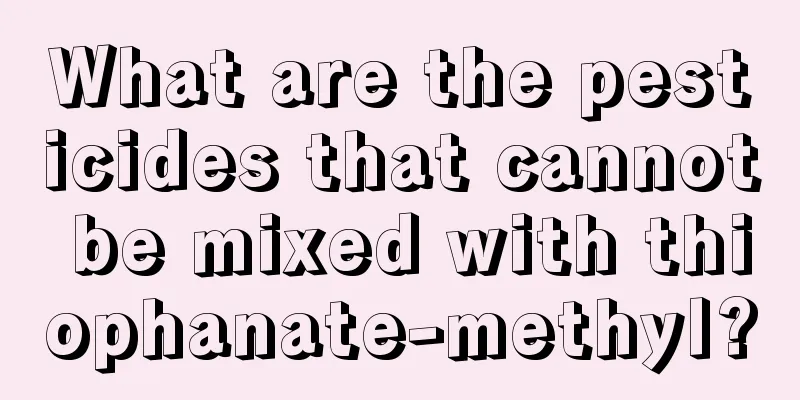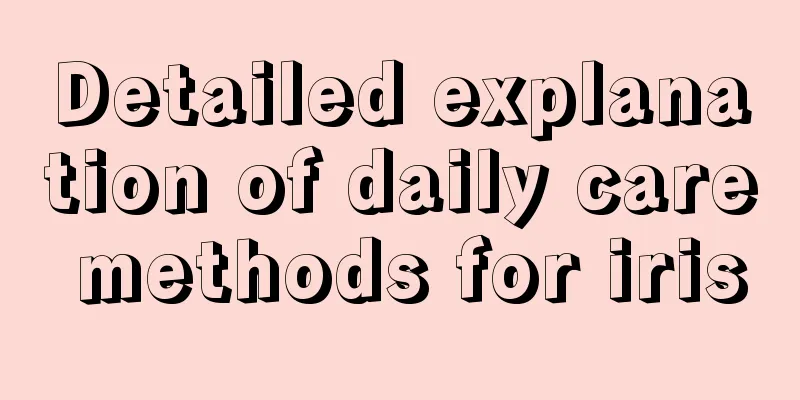What are the pesticides that cannot be mixed with thiophanate-methyl?

|
Thiophanate-methyl is a new, broad-spectrum fungicide that has the characteristics of high efficiency, broad spectrum, and no pollution to the environment. It has good preventive effects on a variety of bacterial and fungal diseases. So what are the pesticides that cannot be mixed with thiophanate-methyl when using it? Let’s learn more about it below. Pesticides that cannot be mixed with thiophanate-methyl Thiophanate-methyl cannot be mixed with strong acid or alkaline pesticides, including diazinon, chlorpyrifos, Bordeaux mixture, sulfur suspension concentrate, lime sulfur, etc. But in fact, thiophanate-methyl has good compatibility with other pesticides. In addition to the above pesticides, it can be mixed with most pesticides. Especially when mixed with similar drugs, it has a synergistic effect and can significantly improve the activity of the drug. How to use Thiophanate-1? 1. Usage (1) Prevention and control of peach perforation disease: Use 600 times diluted 1% thiophanate-methyl aqueous solution or 800 times diluted 1.5% thiophanate-methyl emulsion, spray once every 7 days. The number of sprayings can be flexibly controlled according to the condition of the disease. (2) Prevention and control of downy mildew and black spot of pear trees: When climatic conditions are favorable for the occurrence of the disease, 1.5% thiophanate-methyl emulsion in water at 800 times dilution can be used and sprayed once every 5-7 days for 2-3 times in a row. (3) Prevention and treatment of wolfberry black fruit disease: Using the drug in the early stage of the disease can effectively protect the plants from infection by pathogens. Increasing the dosage after the disease occurs can significantly control the spread of the pathogen, thereby achieving the dual effects of protection and eradication. Use 800-1000 times diluted 1.5% thiophanate-methyl, spray once every 5-7 days, for 2-3 times in a row. (4) Prevention and control of wheat fusarium head blight: Generally, spraying begins when the wheat ear is 5%-10% in the flowering period. The prevention and control period should also be flexibly determined according to the weather. 1.5% thiophanate-methyl emulsion in water 40-50 ml/mu and 27% pentamethylenetetracycline·thiophanate-methyl 25-35 ml/mu can be used. 2. Precautions for use (1) The safe interval for use on cucumbers is 3 days, and it can be used up to 3 times per season. (2) It is prohibited to clean pesticide application equipment in rivers, ponds and other water bodies. (3) Wear protective clothing and gloves when using to avoid inhalation of the drug solution. (4) It is slightly toxic to bees and silkworms, and moderately toxic to birds. It is prohibited to use in bird protection areas and near silkworm rooms and mulberry gardens . In general, thiophanate-methyl can effectively prevent and control a variety of crop diseases, and it also has low toxicity and environmental impact. It is a safe, highly effective, low-toxic, broad-spectrum fungicide. However, in actual application, the recommended dosage and usage instructions in the product instructions should be strictly followed to ensure the efficacy of the drug and reduce the impact on the environment.
|
<<: Is it good for native tulips to rebloom? Do they bloom every year?
>>: How to grow potted jade plants and what to do if they get sick
Recommend
How to grow chrysanthemum Panax notoginseng
1. Lighting Chrysanthemum notoginseng prefers sha...
Can peony flowers be propagated by cuttings in spring?
1. Can cuttings be taken in spring? Cuttings cann...
What flowers bloom in spring
1. Iris It is also called "purple butterfly&...
How to water Lithops
1. Master the correct watering method For Lithops...
Cultivation methods and precautions of Camellia Impatiens
1. Lighting It likes places with better sunlight ...
How to overwinter hydroponic plants in winter
Place it in the sun as much as possible The sunli...
If your home doesn't have enough sunlight, plant these 16 kinds of flowers and don't worry about them growing slowly.
Prunus truncatula The hanging bamboo plum is afra...
How to grow Erigeron grandiflora
1. Breeding conditions 1. Soil: Erigeron grandifl...
Four seasons maintenance method of elmleaf plum
Spring maintenance methods for elmleaf plum Sprin...
When does osmanthus bloom?
1. Flowering period There are many varieties of o...
Does the lucky tree prefer shade or sunlight? Is it okay for the lucky tree not to see sunlight?
1. Do you prefer shade or sunshine? The lucky tre...
Cultivation methods and precautions of Pansy
1. Lighting It likes light, and during the breedi...
What is the best month to plant mulberries?
When to plant mulberries It is more appropriate t...
What kind of soil is best for growing jasmine? What is the best soil for growing potted jasmine?
What soil is suitable for jasmine? Jasmine is not...
What are the cultivation methods and precautions of Yuanbao Tree?
Growth habits of Yuanbao tree Yuanbao Tree belong...









